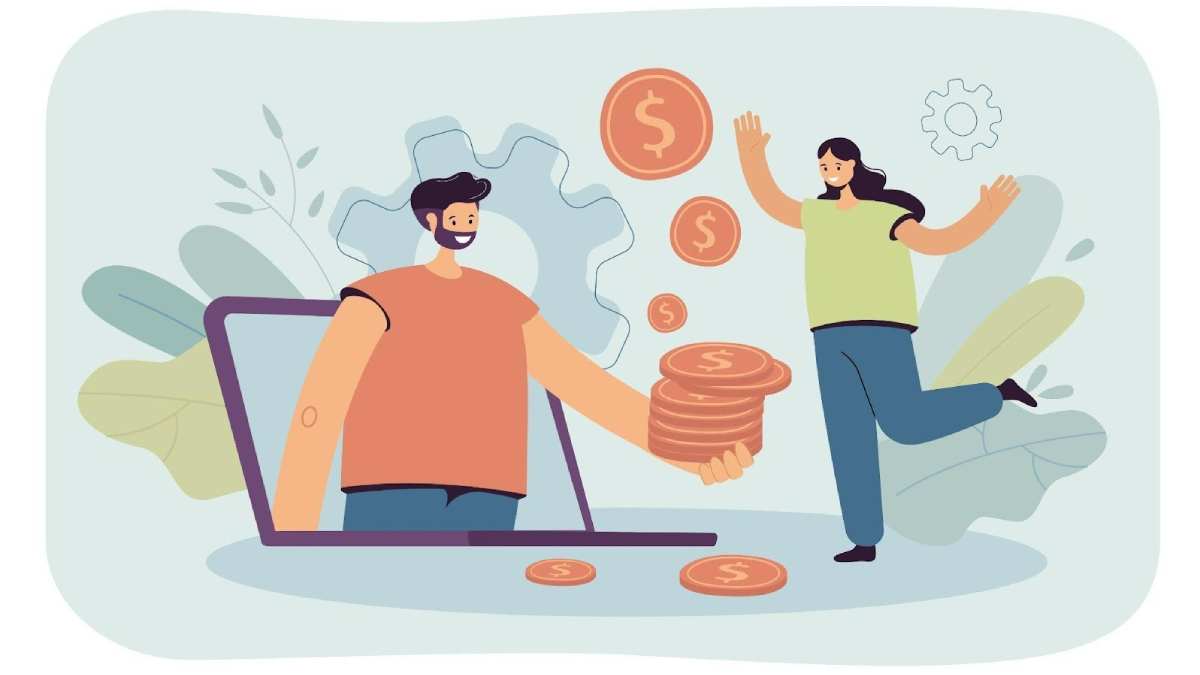Making additional revenue in today’s digital economy is easier than ever. Peer-to-peer lending services are becoming more and more popular. On these platforms, anyone may lend money directly to borrowers and receive interest on the money they lend. This method lets regular people be lenders, which opens up ways to make money without having to know a lot about finance.
Table of Contents
ToggleUnderstanding Peer-to-Peer Lending
Peer-to-peer (P2P) lending links those who need money with others who are prepared to lend it. P2P platforms let lenders and borrowers interact directly with each other, unlike conventional banking systems, where banks function as middlemen. These online platforms check the borrower’s credit, determine interest rates, and handle payback collections, which makes things easier for both sides.
The concept first came up in the middle of the 2000s and has evolved a lot since then. Reports from the sector say that the worldwide P2P lending business continues to grow, thanks to new technologies and more people being open to alternative finance methods.
How the Process Works
Starting to lend money online is usually a simple process. First, you sign up for a P2P lending platform and go through the verification steps, which may involve proving your identity and setting up a bank account. Once you have received authorization, you can look at loan requests from individuals who want to borrow money.
Each borrower’s profile has important information including the amount they need, the reason for the loan, their credit rating, and the interest rate they prefer. Most platforms give borrowers a risk rating based on things like their credit history, how stable their income is, and other financial criteria. Higher-risk customers usually pay lenders higher interest rates in order to compensate for the additional risk.
You get to choose how much to contribute to each loan request. A lot of skilled lenders use a practice called diversification to spread their money among several borrowers. This way, if one borrower fails, they don’t lose a significant amount. For example, instead of giving one individual INR 10,000, you may give twenty different people INR 500 each.
Potential Returns and Benefits
The earnings from P2P lending depend on how risky the borrower is and what the platform’s terms are. Most of the time, lenders may anticipate making between 5% and 12% a year, although these numbers change depending on the market and how well the borrower does. Loans with a higher risk have better rates, but they come with increased default probability.
One big plus is that this revenue stream doesn’t need any work on your part. The platform takes care of processing and distributing payments after the initial setup and loan selection. Most of the time, your monthly payments, which include both the principal and the interest, go straight into your account. After that, you may take out these funds or put them back into fresh loans.
Important Considerations
Peer-to-peer lending has some good points, but there are also a lot of things to think about. Default risk is the most important thing, i.e., borrowers could not pay back their loans even after the platform screens them. When the economy is bad, default rates might go up a lot, which can hurt returns.
Another concern is liquidity. P2P loans usually keep your money locked up for the whole loan term, which can vary to anything from a few months to a few years. Most platforms don’t let you withdraw money early or only let you do so in certain cases.
The dependability of the platform is also important. Find more about the platform’s history, security, and fees. Most platforms impose service fees, which might be a percentage of returns or a set sum for each transaction. Knowing these expenditures helps you figure out your actual net returns.
Different locations have different tax rules. When you make money via P2P lending, you normally have to pay taxes on it; therefore, you need to keep accurate records for tax filing purposes.
Conclusion
Creating parallel income through online lending requires patience and consistent effort. Returns might be appealing, but they build up slowly over time. If you set realistic goals and have a long-term view, you are more likely to succeed. As debts come due and capital returns, reinvesting the money you make increases your earning potential and slowly builds a bigger revenue stream.
How Can You Lend Money Online to Generate a Parallel Income
Shashi Teja
Related posts
Hot Topics
How Can You Lend Money Online to Generate a Parallel Income
Making additional revenue in today’s digital economy is easier than ever. Peer-to-peer lending services are becoming more and more popular….
Nai Taiyari.com: Your Go-To Platform for Tech Tips, Free Recharge Tricks, and Digital Learning
I stumbled across nai taiyari.com while hunting for practical tech tricks that actually work, and honestly? It’s become one of…



